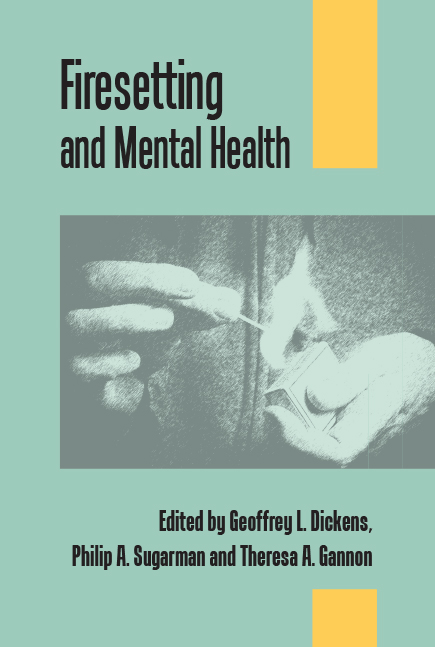Book contents
- Frontmatter
- Contents
- List of figures, tables and boxes
- List of contributors
- Preface
- Part I Theory and research
- 1 Adult firesetters: prevalence, characteristics and psychopathology
- 2 Theories on arson: the action systems model
- 3 Differentiating firesetters: lessons from the literature on motivation and dangerousness
- 4 The potential relevance of brain dysfunction in arson
- 5 The developmental aspects of firesetting
- 6 Intellectual disability and arson
- 7 Female arsonists and firesetters
- 8 Power and excitement in arson: the case of firefighter arson
- Part II Practice and law
- Index
1 - Adult firesetters: prevalence, characteristics and psychopathology
from Part I - Theory and research
- Frontmatter
- Contents
- List of figures, tables and boxes
- List of contributors
- Preface
- Part I Theory and research
- 1 Adult firesetters: prevalence, characteristics and psychopathology
- 2 Theories on arson: the action systems model
- 3 Differentiating firesetters: lessons from the literature on motivation and dangerousness
- 4 The potential relevance of brain dysfunction in arson
- 5 The developmental aspects of firesetting
- 6 Intellectual disability and arson
- 7 Female arsonists and firesetters
- 8 Power and excitement in arson: the case of firefighter arson
- Part II Practice and law
- Index
Summary
Introduction
In the USA, one in 100 adults has a self-reported lifetime history of deliberate firesetting and, for 38% of these firesetting persisted beyond the age of 15 years (Blanco et al, 2010; Vaughn et al, 2010). These statistics, findings from the National Epidemiologic Survey on Alcohol and Related Conditions (NESARC), represent the first attempt worldwide to gauge the extent of intentional firesetting in a general adult population. If it is accurate, then, based on US population figures (US Census Bureau, 2010), there are roughly 1 million US adults who have deliberately set fires since age 15. In the UK the figure would approach 200 000 (Office for National Statistics, 2005). This chapter critically explores the current evidence base on the prevalence of firesetting behaviour and examines these new findings in the light of previous research on arson and firesetting among more highly selected offending and clinical populations. The key questions addressed relate first to the credibility of this new evidence, and the extent to which it supports the current knowledge base about the correlates, characteristics and psychopathology of arsonists and firesetters. Second, the chapter synthesises the current knowledge of the characteristics of those who deliberately set fires, and addresses the sociodemographic factors, psychopathological features, co-offending behaviours and developmental characteristics associated with deliberate firesetting (see Table 1.1). The chapter provides practitioners with state-of-the-art information on which to base clinical decision-making in this difficult and sometimes misunderstood area, and highlights gaps in knowledge, where future research is needed.
‘Arson’ is a legal term which defines the specific criminal act of intentionally or recklessly setting fire to property or wildland areas; an arsonist has, by definition, been convicted of the crime of arson. A firesetter displays a behavioural phenotype, the deliberate setting of fires, which may not have been prosecuted, for a number of reasons: the fire has been insufficiently severe to cause damage or has not been detected as a deliberate fire; it has not been possible to identify who set the fire; there is insufficient evidence to gain a conviction; or the young age of the firesetter. ‘Firesetting’ is therefore applicable to a wider range of people who deliberately set fires than the narrow legal definition represented by the term ‘arson’.
- Type
- Chapter
- Information
- Firesetting and Mental Health , pp. 3 - 27Publisher: Royal College of PsychiatristsFirst published in: 2017

